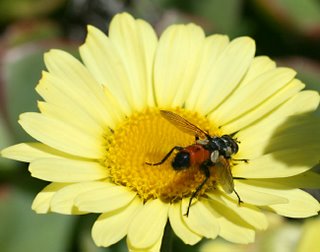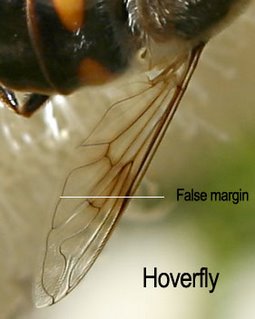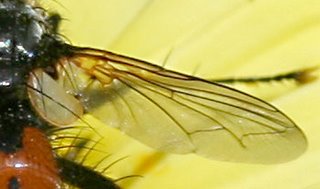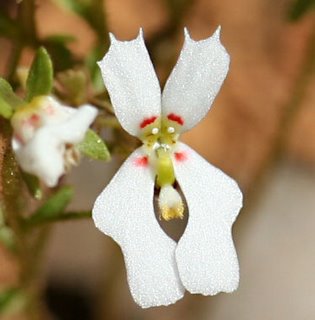More confusing flies

There are masses of these insects about the place at the moment, as our unseasonally warm weather continues to encourage all the invertebrates to swarm about like it's February already. I fantasise that I live in Cairns and can almost see lightning cracking over canefields.
But I digress - at first glance I thought this was a tiny wasp, (it's appearing in sizes from tiny to small - 5-10 mm versions) it has all the right waspy colours and a nice wasp waist. Then a closer look made me see just two wings so I thought bee-fly. Then a very close look made me think
hoverfly.
Hoverflies do the Batesian mimic thing very well, deterring predators by having that bee or wasp lookalike demeanour. Looking at a close-up of this flies wings, it's striking that the veins don't go all the way to the wing margin. This is characteristic of hoverflies, creating what is referred to as a "false margin". The other noticeable thing about this fly's wings is the scale over the halteres - a squama.
Here's a pic of a bee fly wing to emphasize the difference. This is the one from a week or so ago. It's a spectacular wing venation - just look at those lovely scrolls.
And here's a classic hoverfly wing - this is the introduced drone fly, Eriastalis tenax, the rat tailed maggot fly.
And here is today's fly. I'm not sure it's a hoverfly, so the mystery is still out there for the solving.




